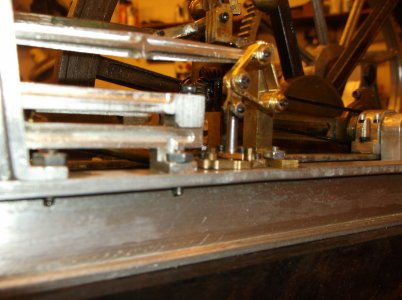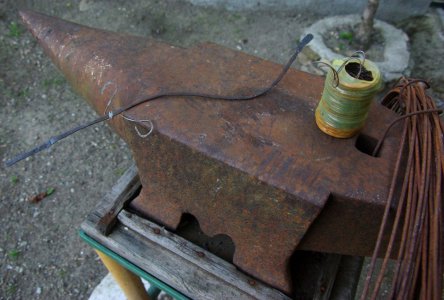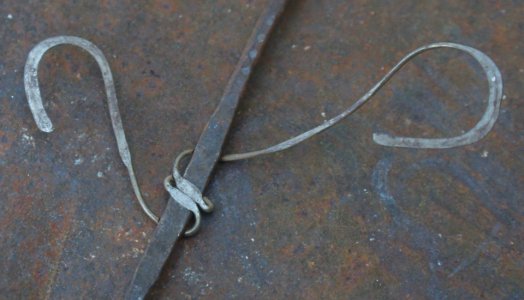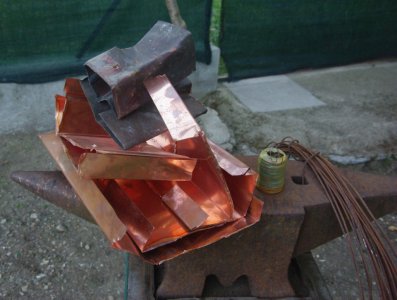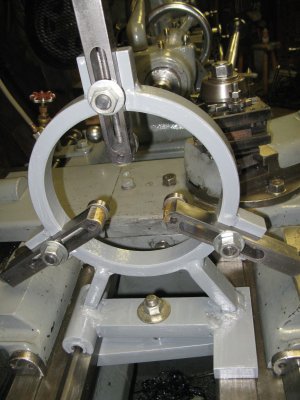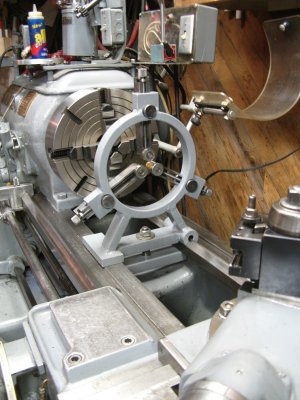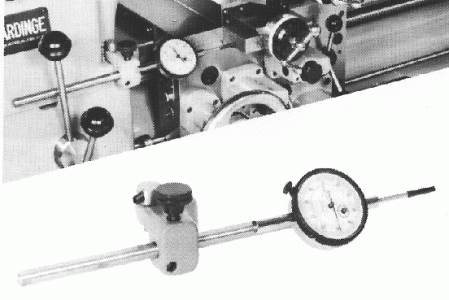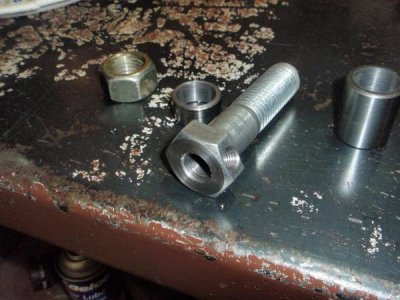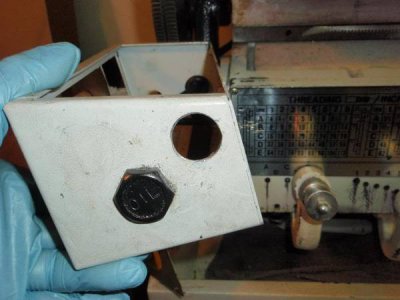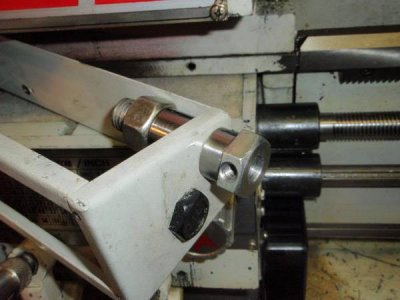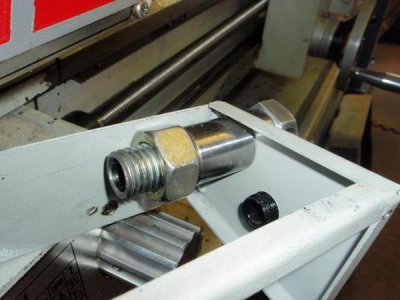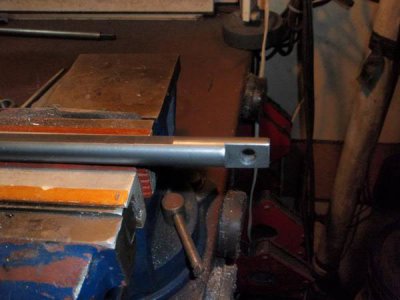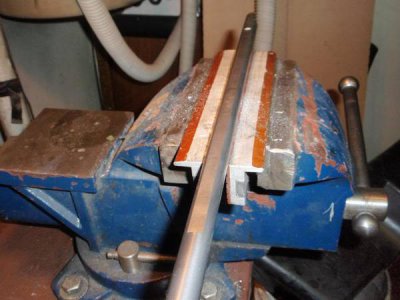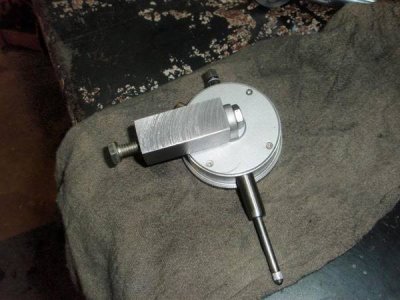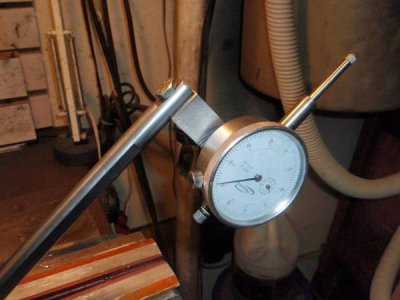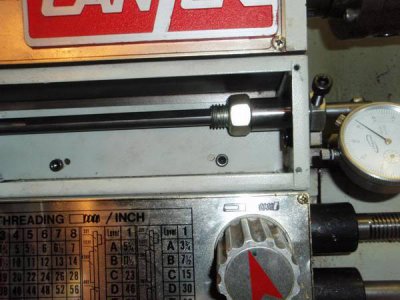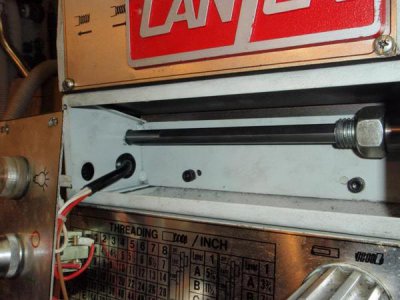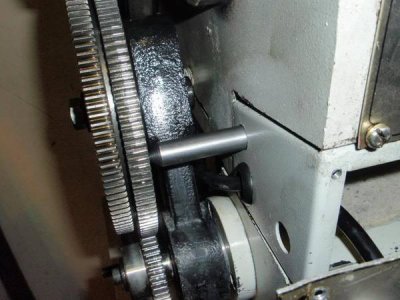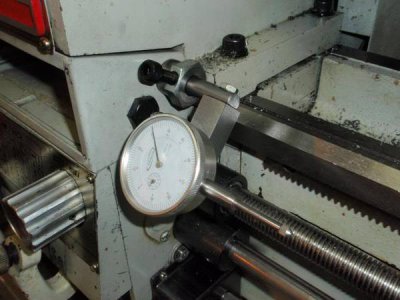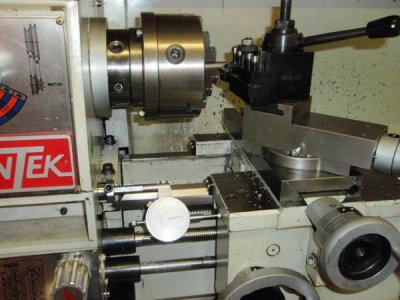Re: POTD - Get a handle on it & organize
Yesterday's efforts, too tired to post last night.
The old Index has been lacking a right side handle since I bought it. I went through my stock on hand and actually came up with this kludge:
The piece of fuel hose in the pulley groove is great for a good grip. Oak handle, 5/16" carriage bolt with a sleeve.
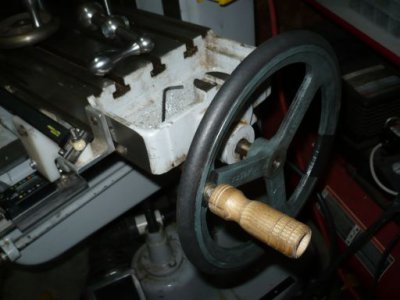
Spot facing backside. Messed up the front side, end mill grabbed. Hence the big ass clamps for working the backside.
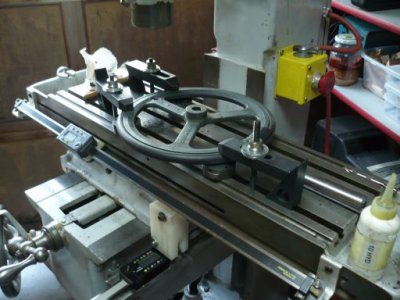
Choice on hand. The regular crank handle was a bit loose with the bushing I have in it, I think it is for a larger machine.
I believe there was something in my coffee when I grab the old pulley that has been floating around for eons.
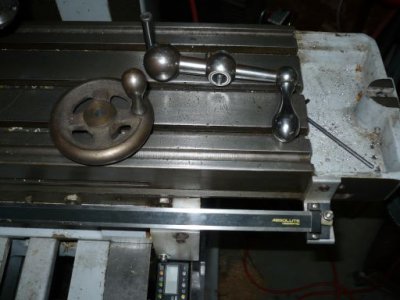
Then on to the 'Bench'. I was lucky & picked this up in a barn find last summer. Looks like it came from an assembly plant.
There was carpet glued on the top and all four sides and it had a uni-strut frame mounted to it supporting a roller rail.
The (6) 3/8" holes were drilled by hand and they weren't straight at all. I decided to drill them out to 1/2" and plug them.
Then I got imaginative and found a 1/2" drill bushing in a drawer, working wood meets machining fixture....
After drilling the first hole I got smart and hugged the drill close. Brand new cleveland drill dug in fast.
The ribs should heal in a couple of days...
Holes before:
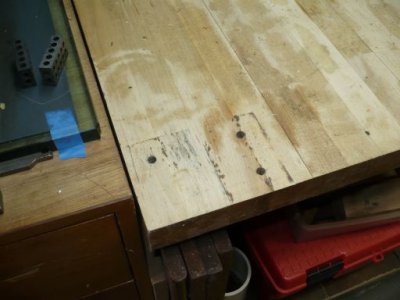
Jig in position:
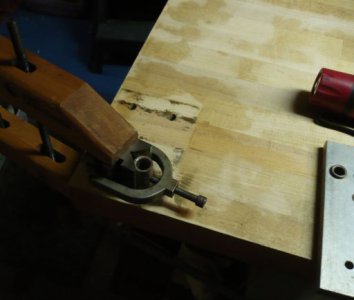
Holes after:
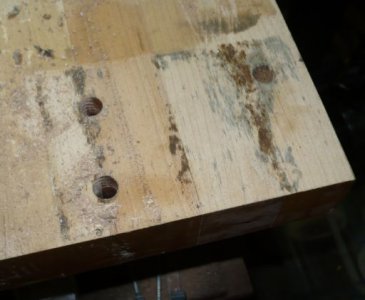
The carpet adhesive is turning to goo...
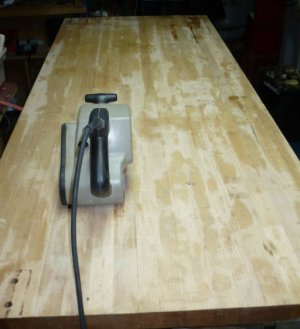
... Need to get back to repairing the Birmingham.
_Dan







